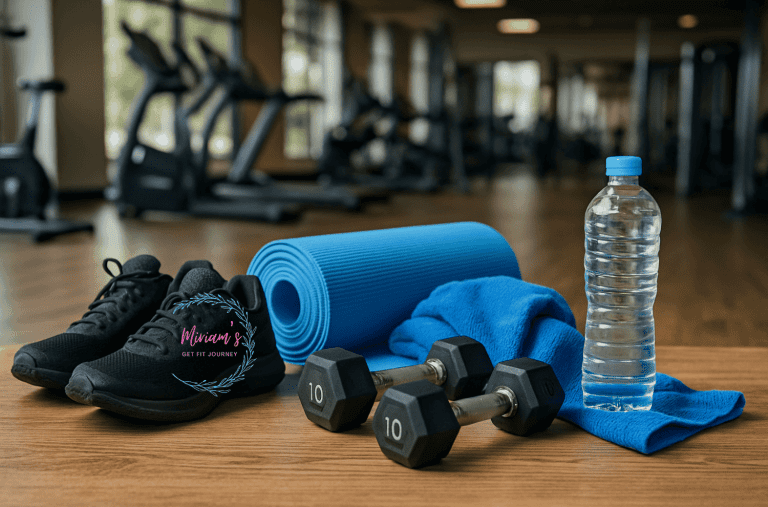Finding Your Fit: Create a Workout Program That Works for You by Miriam Rees
Starting a new fitness journey is exciting—but with so many workout programs out there, choosing the right one can feel overwhelming. Whether you’re new to exercise or ready to switch things up, the key is to find a plan that supports your goals, fits into your life, and keeps you motivated.
Use this simple guide to design or select a workout program tailored to your needs and preferences.
1. Define Your Fitness Goals
Your goals are the foundation of your fitness plan. What do you want to achieve?
- Weight Loss: Choose programs that combine cardio (like walking, HIIT, or cycling) with strength training.
- Muscle Gain: Focus on resistance training with progressive overload (lifting heavier over time).
- Endurance: Try steady-state cardio or interval training such as running, cycling, or HIIT.
- Flexibility and Mobility: Consider yoga, Pilates, or mobility-based routines.
- General Health and Energy: Aim for a balanced mix of strength, cardio, and recovery-focused workouts.
2. Know Your Current Fitness Level
Being honest about where you’re starting is key to avoiding burnout or injury. Determine your level:
- Beginner: New to exercise or returning after time off.
- Intermediate: Regularly active and comfortable with a variety of workouts.
- Advanced: Experienced and looking for performance gains or more intense challenges.
3. Choose a Format That Fits Your Lifestyle
The best workout is the one you’ll actually do consistently. Choose a format that feels accessible and enjoyable:
- Online Workouts: Ideal for flexibility and convenience—choose from yoga, HIIT, dance, or strength programs.
- In-Person Classes: Great for accountability, social motivation, and professional instruction.
- Home Workouts: Use bodyweight, resistance bands, or dumbbells on your schedule.
- Outdoor Activities: Running, hiking, biking, or team sports can be fun and energizing alternatives.
4. Create a Realistic Workout Schedule
Consistency is more important than perfection. Decide how many days a week you can realistically commit—ideally 3 to 5 times per week. Consider:
- What time of day feels most natural for you to exercise (morning, lunch break, evening)?
- How long can you dedicate to each session? Even 20–30 minutes can be effective.
5. Listen to Your Body
Your fitness routine should challenge you—but not exhaust you. Modify exercises or take extra rest days when needed. Key things to watch for:
- Persistent soreness
- Fatigue or low motivation
- Discomfort or pain during movement
Include rest days and active recovery (like stretching or walking) to support progress and avoid burnout.
6. Prioritize Activities You Enjoy
The more fun you have, the more likely you’ll stick with it. Ask yourself:
- Do I enjoy group classes or solo workouts?
- Do I prefer dancing, lifting, running, or stretching?
- Would I rather exercise outdoors, at the gym, or at home?
Examples:
- If you love music and energy: Try Zumba, dance cardio, or spin classes.
- If you enjoy calm and focus: Try yoga, barre, or Pilates.
- If you love a challenge: Explore HIIT, CrossFit-style workouts, or personal training.
7. Get Help From a Professional (Optional but Helpful)
If you’re unsure where to start or want faster results, consider working with a certified personal trainer or coach. They can:
- Customize a plan to your goals
- Teach proper form
- Help you stay motivated and accountable
Many gyms and studios offer free or discounted intro sessions, and there are also virtual coaching options available.
8. Test Your Program for 4–6 Weeks
Give any new workout routine at least a month before deciding if it’s right for you. Ask yourself:
- Am I feeling stronger, more energetic, or more confident?
- Do I enjoy the workouts and feel excited to continue?
- Is it realistic to maintain?
If it’s not working, adjust the format, schedule, or style. There’s no one-size-fits-all—fitness is personal!
Final Thoughts: Your Best Workout Is the One You’ll Stick With
Choosing the right workout program is about more than just burning calories—it’s about building a lifestyle you enjoy and can sustain long-term. Keep your goals in mind, listen to your body, and stay open to trying new things.
Remember:
- Progress takes time
- Consistency beats intensity
- Enjoying the journey makes all the difference
Ready to start your fitness journey? Choose your path, commit to progress, and find your fit—your healthiest, strongest self is waiting.





